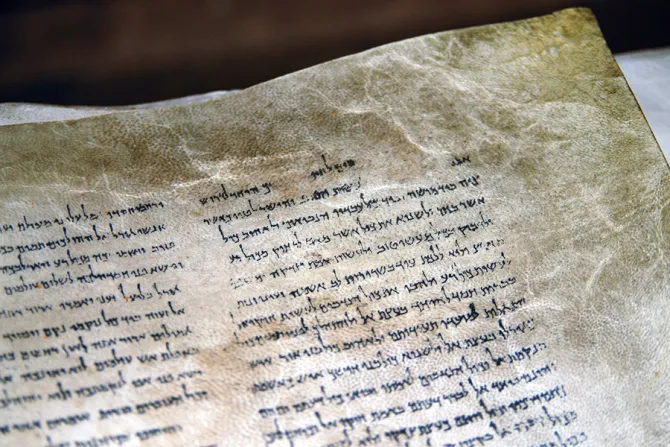Louisville, Ky., Sep 27, 2016 / 19:44 pm
For the first time in centuries, an ancient Biblical scroll could be read, thanks to a computer scanning technology that can reconstruct a clear text from damaged, unreadable material.
"This work opens a new window through which we can look back through time by reading materials that were thought lost through damage and decay," Brent Seales, a University of Kentucky professor of computer science, said Sept. 22.
"There are so many other unique and exciting materials that may yet give up their secrets - we are only beginning to discover what they may hold," Seales added, according to the University of Kentucky.
Seales and his team developed a high-resolution computer scan that will "virtually unwrap" a severely damaged ancient scroll of animal skin with an ink-based text. The scan can create clear, legible text from a wrapped scroll despite the damage.
Analysis of one scroll revealed 35 lines of text from the first two chapters of a version of the Book of Leviticus.
The scroll is at least 1,500 years old. It comes from a 1970 archaeological excavation in the synagogue at En Gedi in Israel. The scroll was badly burned at some point in its life and it was previously undecipherable.
"The discovery of text in the En Gedi scroll absolutely astonished us; we were certain it was a shot in the dark, but the most advanced technologies have brought this cultural treasure back to life," said Pnina Shor, who is curator and director of the Israel Antiquities Authority's Dead Sea Scrolls Project.
Seales and Shor are among the co-authors of a study about the project, published Sept. 21 in the Science Advances journal.
Scholars at the Hebrew University of Jerusalem were able to conduct a critical analysis of the recovered text.
The scroll's text is identical to the Masoretic text, which is often used as the basis for Protestant Bibles' translations of the Old Testament, the New York Times reports.
The Dead Sea Scrolls found have many small differences compared to the Masoretic text.
Carbon dating of the scroll indicates it is a copy dating back at least to 300 A.D.
Analysis of the script's style suggests it could date back as 50 A.D. to 100 A.D., according to Ada Yardeni. Yardeni, an expert on Hebrew paleography, analyzed the text in the journal "Textus."
The new computer technique could reveal the contents of other damaged, unreadable scrolls, such as Dead Sea scrolls found near the Dead Sea. Classical texts from places like Herculaneum, the Greek city destroyed by the eruption of Mount Vesuvius in 79 A.D., could also be recovered from carbonized scrolls.


